Sri lankan buddhist history
Introduction to History of Sri Lanka page
When exploring the history of Buddhism, undoubtfully this small island in the Indian Ocean, Sri Lanka, occupies a prominent place in the world. For the Sambuddha-Sasana to last for 5000 years, our great teacher the Supreme Buddha established the power of determination in Sri Lanka. It was our great teacher the Supreme Buddha who vanquished and subdued the inhuman demons in Sri Lanka and then drove them to an island by force of arms to establish an environment suitable for human settlements. Hence, the pearl of the Indian ocean, the heavenly land of Sri Lanka has become the Buddhist centre of the world and the home of dhamma and there were tens of millions of Arahants descended. This magnificent island has a written history dating back more than two thousand years. The historical books of Mahavamsa and the Deepavamsa, which are great meticulously kept the historical chronicle of Sri Lanka, and many other archaeological research findings confirm the history of Sri Lanka. For those of you who are excited and eagerly waiting to read and learn the history of this splendid island, we present the historical information with authentic sources on this Mahamevnawa Melbourne website.
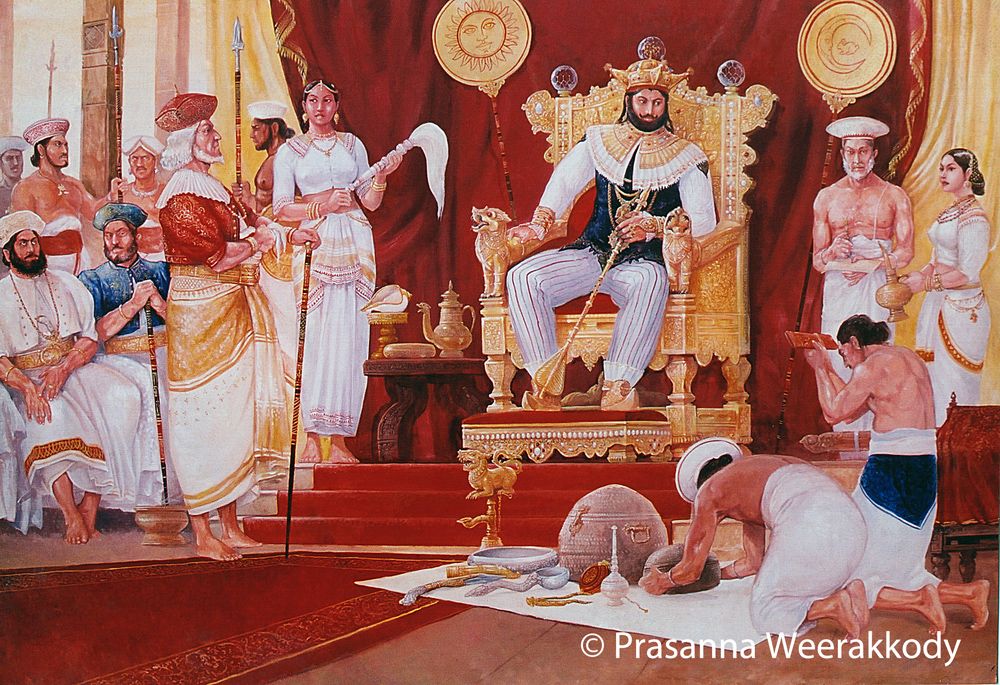
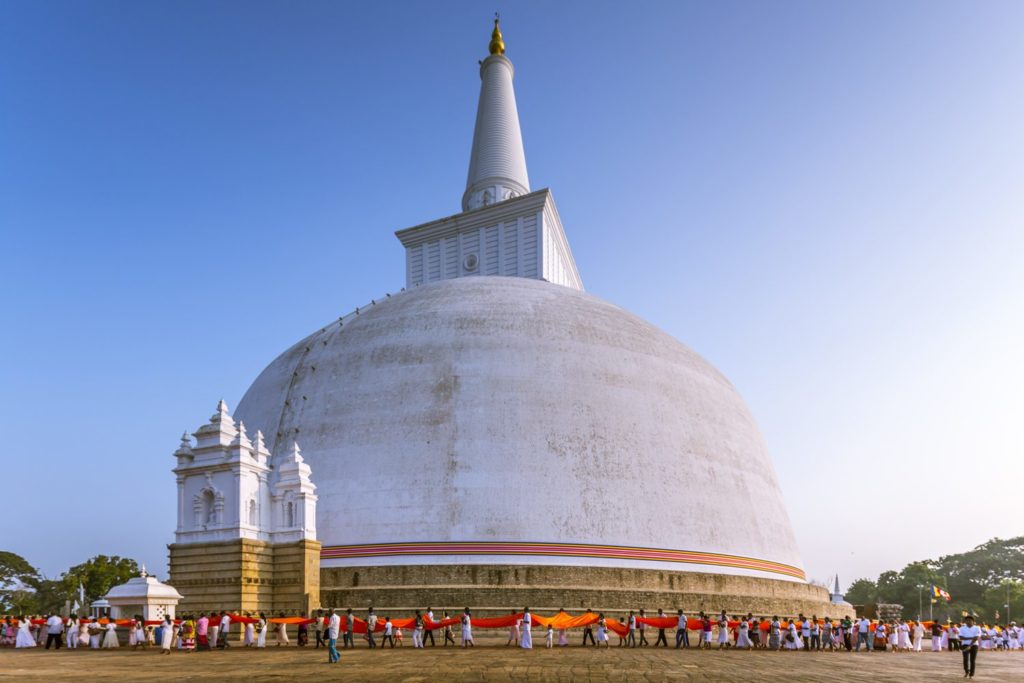
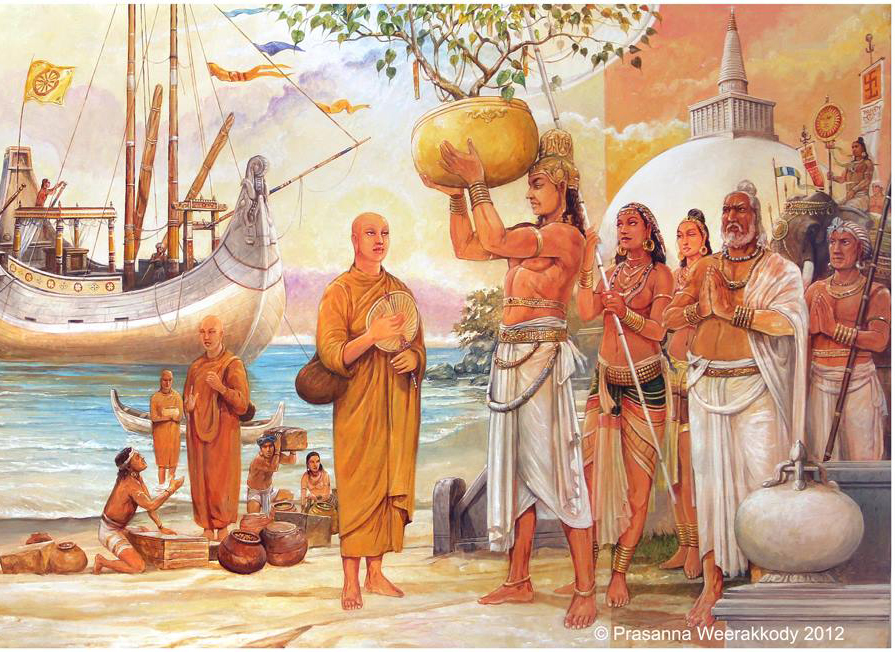
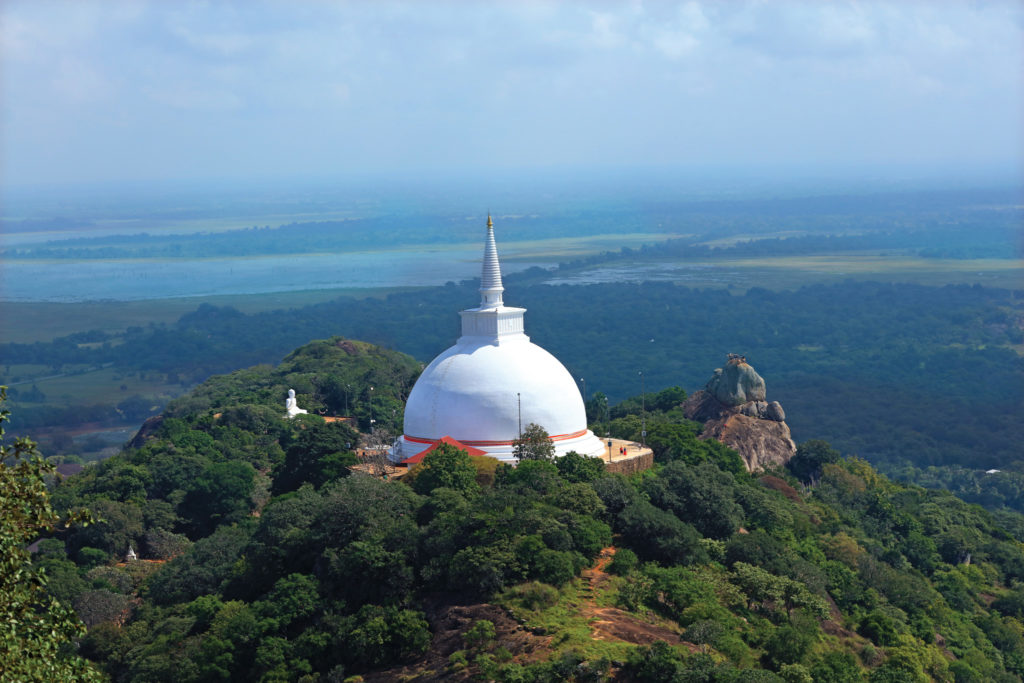
Who are the Sinhalese?
ruwanweli seya
Buddhist history
Pagodas in Sri Lanka
With a written chronicle of thousands of years, the Sinhala nation is a descendant of our great teacher the Supreme Buddha, who is the most unique patriarch of the world. Explore some exciting information about Sinhala nation and Sri Lanka on this page extracted from the historical information descended from Nikleshi Arahants.
With a balmy tropical climate, spectacular sandy beaches, lush deep green forests, high-altitude hills, a diverse array of wildlife, and cities and towns bursting with colour this little island nation called Sri Lanka is the capital of Buddhism of the world. In this country with a great written historical chronicle, there is a sacred city called Anuradhapura, which is one of the ancient capitals of Sri Lanka. In this sacred city, there is a great stupa known as the Ruwanweli Maha Seya, the Mahathupa, which is a hemispherical structure (A Buddhist Pagoda). One Drona of our great teacher the Supreme Buddha’s relics is enshrined in the stupa, making it the largest collection of the Supreme Buddha’s relics found anywhere in the universe. Mahathupa was created by the miraculous power of determination of our great teacher the Supreme Buddha. This stupa is the emblem of sanctity, blessed with the presence of the Buddha and venerated by gods, great kings, and Buddhists for centuries and beyond.
Buddhism, which is one of the world’s major religions was originated in India in 563 – 483 B.C.E. with the great teacher the Supreme Buddha. Over the next millennia, it spread across Asia and the rest of the world. Sri Lanka has been the centre of Theravada Buddhist scholarship and practices since the introduction of Buddhism in the third century BCE. Also, Sri Lankan Arhath Bhikkus preserved the vast Pāli Canon, which is being practised and taught in various Theravada Buddhist nations around the globe. Throughout most of its history, Sri Lankan kings have played a major role in the maintenance and revival of the Buddhist institutions of the island. Click on the below link to learn more about the history of Buddhism.
Pyramids are unique to ancient Egypt. Similarly, Sri Lankan Pagodas, also called stupas, dagebas and cetiyas, are a unique outstanding type of architectural creation of ancient Sri Lanka. Stupas designed and constructed in Sri Lanka are the largest brick structures known to the pre-modern world. It is accepted that the building of gigantic stupas started during the reign of King Dutugemunu. At 122 metres (400 ft), Jethawana stupa was the world’s tallest stupa and the third tallest structure in the world when it was built by King Mahasena of Anuradhapura (273–301). Some of the most fascinating stories about the ancient Sri Lankan stupas are compiled in this section to scaffold your knowledge.
The Story of the Lineage of the Greatest
Mahavansa
Foreword
Mahavansa is the most prominent historical book written based on extremely authentic records of the Sinhala nation, Sinhala royal lineage, and the beginning of the Buddhist order established in Ceylon. If a certain nation of the world possesses such a written historical book, it is only the Sinhala nation. Therefore, Mahavansa should be included as a must-read, in the list of books compulsory for the Sinhalese to read.
Our Supreme Buddha was born in India. But the Buddha rightly foresaw that the Buddhist Order will be continued not in India but Ceylon. Therefore, after nine months of the Great Enlightenment, the Buddha arrived at Mahiyanganaya, in Ceylon and controlled the malicious Yakkas who would be a threat to the future generations and the Buddhist Order. He secondly visited Nagadipa. That is after five years of the Great Enlightenment to resolve a conflict of the Nagas. On the invitation of the Naga king, Maniakkhika the Buddha arrived at Kelaniya on his third visit to Ceylon. That is after eight years of the Great Enlightenment. The advent of the Buddha did not result in the establishment of the Buddhist Order because there was no human inhabitant then. The so-called modern scholars who are ignorant of this, are repeatedly condemning their own history with hair-splitting arguments. Ceylon human habitation started on the same Vesak Full Moon Poya Day the Buddha demised in India. That was 2563 years ago. The Mahavansa explicitly details out how prince Vijaya along with 700 retinues landed in Ceylon and settled here establishing the Sinhalese monarchism.
Also, the Mahavansa clearly records that the Buddha made five resolutions with regard to the Buddhist Order in Ceylon while lying on the couch of His Demise.
- The first resolution was that the right-wing branch of the Sri Maha Bodi itself which would be received by King Dharmashoka to be detached from the Bodhi tree and placed in the golden vessel.
- The second was the right-wing of the Bodhi tree to emanate beautiful six colours of rays from the leaves and the fruit making all the directions joyful after it is placed in the golden vessel.
- The third was the right-wing of the Bodhi tree to raise itself above the sky and hide in a white cloud for seven days along with the golden vessel.
- The fourth resolution was that the right collarbone of the Buddha would be enshrined in the Thuparama, to rise in the air and perform the miracle of the double appearances.
- The fifth resolution is when the Buddha’s pure relics, filling a droņa measure are enshrined in the Great Swarnamali stupa that beautifies Ceylon, they may take the form of the live Buddha and rising up they would perform the miracle of double appearances before they are placed in the stupa.
(Verse 47-52 of the First Phase, the 17th chapter of Mahavansa)
Mahavansa proves that the five great resolutions of the Buddha have been fulfilled. Also, the advent of Prince Vijaya in Ceylon was not a coincidence, but a special one. Mahavansa is clear on the fact that our nation even received the name “Sinhala” owing to Prince Vijaya’s connection to that.
Those days, non-humans resided in Ceylon. It was while lying on the couch of Parinirvana that the Buddha advised God Sakka to protect Prince Vijaya and his retinue from the attacks of the non-human residents, as they were to initiate civilization in Ceylon with their arrival in Ceylon. Mahavansa records this fact as follows.
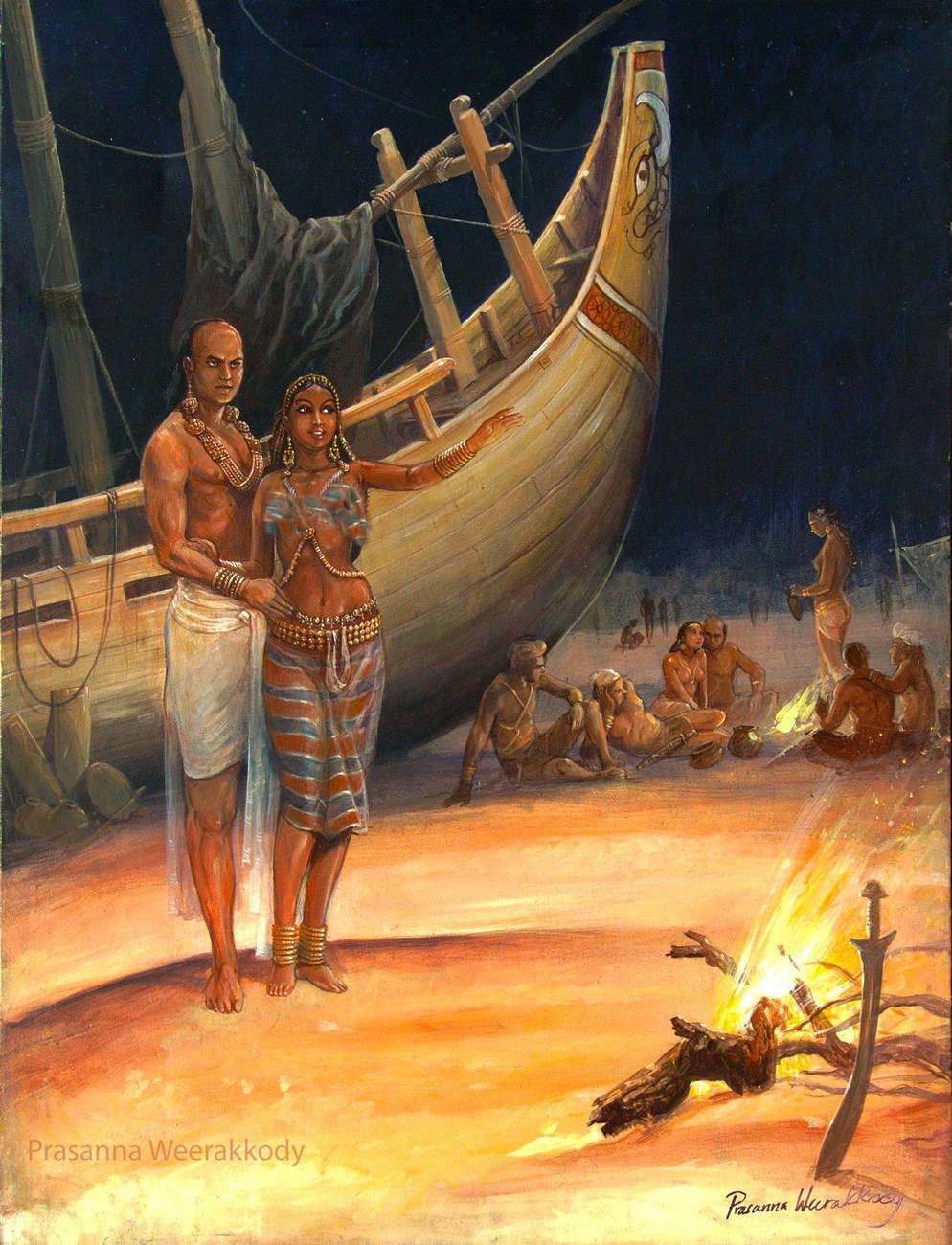
Vijayo lāḷāvisayā, sīhabāhunarindajo
Esalaṅkādhanupatto, sattabhacca satānugo.
Patiṭṭhahissati devindaṃ, laṃkāyaṃ mama sāsanaṃ
Tasmā saparivāraṃ taṃ, rakkha laṃkañca sādhukaṃ.
“Prince Vijaya, the son of King Sinhabahu landed on Ceylon from the country of Lata with 700 retinue.
God, my Order will be established in Ceylon. Therefore, Prince Vijaya with 700 retinue and Ceylon should be well protected”
Respecting the word of the Buddha, God Sakka arranged protection for this group. Therefore, they started human habitation in Ceylon without any harm from the non-humans. Also, our Mahinda Maha Arahat thera’s advent in Ceylon took place at the proper time. After that, Ceylon became the centre of the Buddhist Order. The Sinhala nation became the nation that protects the Buddha’s Order. The extreme patronage of Maha arahat Moggaliputta Thissa, who led the Third Dhamma Council in India and Emperor Dharmashoka was extended in establishing the Buddhist Order in Ceylon.
It is surprising that even if a chronicle named Mahavansa was compiled in such a small country as Sri Lanka with all the important historical records of the start of its human habitation, history of the Buddha’s Order, and the lineage of Royal Kings, there is no historical chronicle as such in India despite the fact that it is a huge country. It is not very difficult to understand the reasons for this when we look at India that has been under the hegemony of the Brahmins.
The books of the Brahmins do not include any piece of information about India becoming a favourable place for human inhabitants, how the monarchy was introduced, how the spiritual leaders were born, and the kings who supported them. Brahmins do not like to accept others’ views. That is well shown in the Sutta Pitaka. Their fundamental religious books were the three Vedas written by their forefathers. The Vedas lost their importance due to the Mahayana teachings based on the Sanskrit language that was spread by exceptional universities like Nalanda. Background for that was formed thus.
The second Buddhist Council was held 100 years after the Buddha’s demise. A group of monks, known as the “Mahasanghika” misunderstood that the Buddhist Council was conducted against them, and separated from the main body of sangha. They laid the foundation for the heretical Mahayana presenting imaginative ideologies against the pure Dhamma and Vinaya. As a result of that, Indian Bhikkus had been disintegrated into 18 sects by the time of the Third Buddhist Council which was held with the mediation of the Great Arahant Moggaliputta Thissa and the patronage of emperor Dharmashoka. After that Council which protected Dhamma and Vinaya as they originally were, arahants were sent to various countries. It was Great Arahant Mihindu who arrived in Ceylon in that Dhamma missionary service. Because of that, the Buddha’s Order in Ceylon was purely protected.
With time, the Mahayanikas who mastered the exorcism used Sanskrit as their medium for the Dhamma dissemination. They studied the Dhamma merely for the sake of debating. A person who catches a serpent by its tail dies, because of the fact that he caught the serpent in the wrong place. Likewise, the Buddha, in Alagaddupama Sutta preached a person who studies the Dhamma in order to debate may be destroyed because he studies the Dhamma for the wrong purpose.
Likewise, the Mahayanists defeated the Theravada Bhikkus first and made them vanish from India. After that, they entered the debate on the teachings of the “soul” mentioned in the Vedas of the Brahmins. The Brahmins continued to be defeated from the debates. Then, the Brahmins who were outrageous with the Buddha and the Sangha, by mastering their exorcist powers swept away Buddhism from India. Since the ideas of the Vedas were criticised in the debates, they authored a book named, “Bhagavad Geetha”. It includes the teaching of the Ten Great Avatars or Incarnations. Moreover, most of its facts are extracted from the Dhammapada and the Suttas.
Then they composed Ramayanaya. They wrote that based on the Bodhisattva Rama in the Dasaratha Jataka. According to their teachings of Avatars, the story was filled with mythical stories. They also wrote a book named, “Daha Ata Puranaya” (Eighteen Stories) constructing history with despiteful stories that condemned the Budda and God Sakka instead of the history that prevailed. They gave up the Lakkhana Shastra (Teaching on Foretelling based on the Physical Features) too. Even today, most Indians are against the Buddha as well as Buddhism. They hate even to mention the name of the Buddhist kings. Everybody knows how much the Hindu Tamils in the Nothern part of Sri Lanka are against Buddhism.
During the Colonial rule of the English, many inscriptions of Emperor Ashoka and Pillar Inscriptions were found from various places in India. The English who read these, tried their best to find king “Devanampiya” in all the Indian Brahmin books, as that name is mentioned in those inscriptions. At last, they sought the support of the chronicles in Ceylon. There, they realized it is none other than emperor Ashoka who was referred to as Devanampiya.
Bhimrao Ambedkar, who was the Minister of Constituent Drafting Committee of Independent India, converted to Buddhism with lakhs of low caste people. However, still, the Indians do not consider Buddhists to be a separate community. Further, they are thoroughly against the spread of Buddhism. The Buddhists are discriminated against and ill-treated by the Indian Brahmins considering Buddhism to be a branch of Hinduism. I know this by experience.
Huge ruins spread throughout India were excavated by the Archaeological Survey In India established during the English government. It was our Mahavansa and the ancient travel records of travellers like Xuanzang that were highly supportive of that mission. Thereby, we should gratefully remember that it was Mahavansa that primarily guided them to rediscover the history which was forcefully buried in India.
The English knew for sure that the Sinhalese would someday stand strong owing to the greatness of Mahavansa. So they did everything to make the Sinhalese lose their respect for Mahanvansa. The education system with the slavish attitude which they granted us teaches us not to accept history with respect, but to despise it. Some so-called scholars at present are performing the same role as the White people in a mean way.
At present, not only the common Sinhalese but also the Bhikkus do not know the history. Because of that, they shamelessly and readily accept all the deformed ideologies which are completely against the history of the Sinhalese and Buddhist Order. The only way to save the Sinhala society from this unfortunate tragedy is to make them read Mahavansa. Many scholars have commendably attempted to do this a number of times, but we have still failed to socialize it.
Venerable Kiribathgoda Ghanananda Thero

